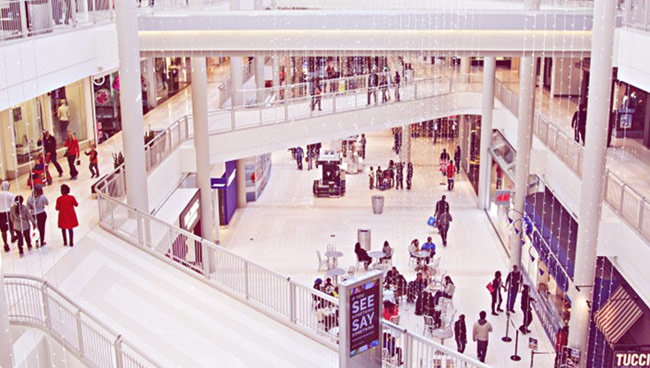Massive hospital complexes are so 2015. Today’s healthcare providers have their fingers on the pulse of retail real estate and are swooping in to transform store space into exam and procedural rooms. We share some unfolding examples, and the active role retailers can play based on our consumer survey results.
Malls are Replacing Checkouts with Check-ups
We call it “MedTail”: The transfusion of medical services into shopping centers as healthcare providers take advantage of vacant retail space in easy-to-reach communal settings.
We’ve seen the demand for easily accessible wellness in our research and it’s playing out in the malls. The number of mall-based medical clinics has increased by almost 60% from 2017 to 2019, CNN reports, in the same period leases for clothing retailers have declined by more than 10%.
The shuttering of thousands of retail shops, it turns out, comes at an opportune time for healthcare. According to a report by The Advisory Board, outpatient visits are expected to increase 58.6% by 2028. Because outpatient procedures generally require a quick turnaround, they need to be easy to access, like in a shopping center.
The opportunity for retailers and brands is to be part of the movement to conveniently located wellness in these new retail spaces. Will the drug store return to the mall? The emphasis for specialty retailers already in the mall should be clean products and fitness to support the wellness mindset.
Medical Malls of America are on the Rise
The largest example of a mall becoming a medical hub may be in Minneapolis. In 2019, the Mall of America teamed up with University of Minnesota physicians and a Minnesota-based healthcare system to open a 2,300-square-foot walk-in medical clinic with exam rooms, a radiology room, lab space and a pharmacy.
Elsewhere in the country, medical services are reviving the wings of struggling shopping centers
- The Dana-Farber Cancer Institute is planning a 34,000 square-foot oncology and hematology outpatient facility in the Patriot Place shopping center in Foxborough, Massachusetts.
- Also in Massachusetts, developers are preparing to rebuild the former Greendale Mall into a lifestyle hub with medical offices, apartments and retail.
- In Dallas, the University of Texas Southwestern Medical Center and Parkland Hospital announced plans to occupy space vacated by Sears at the former Red Bird Mall.
- And in Nashville, Vanderbilt Health, operated by the Vanderbilt University Medical Center, operates as an anchor alongside Michaels and PetSmart at Hundred Oaks Mall.
Meanwhile, retailers are seizing the opportunity for themselves and transforming their own stores into health service spaces.
- Wellness retailer CVS – having acquired the health insurer Aetna – is remodeling 1,500 locations into HealthHubs to treat patients with chronic conditions.
- Walmart Health Center in Georgia is the company’s first location to support its plan to become America’s neighborhood health center. The center offers routine health, dental and optical care plus Xrays, EKG, and counseling.
- Independent retailers are clustering into districts with services that include dental care, meditation and CDB treatments.
“Medtail” Is More Than A Band-Aid Solution To Retail Vacancy.
Here are some key wellness features shoppers seek from the consumer brands and stores they shop, according to our How America Shops® research:

Nearly half are now paying for holistic services to relieve stress and pain, such as acupuncture and massage.
The message is this: Keep an eye out for healthy opportunities. If a nearby shopping center is adding health facilities, there may be a chance to cobrand or operate a kiosk nearby. It’s a lower-cost way of testing the healthcare waters in a new environment.
And if the effort needs adjusting, the Band-Aid won’t hurt so much to rip off.



